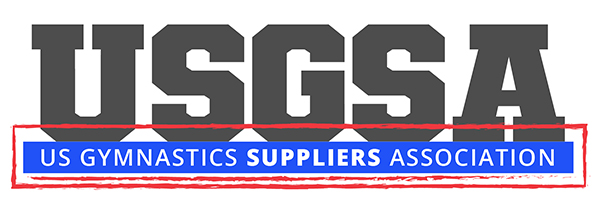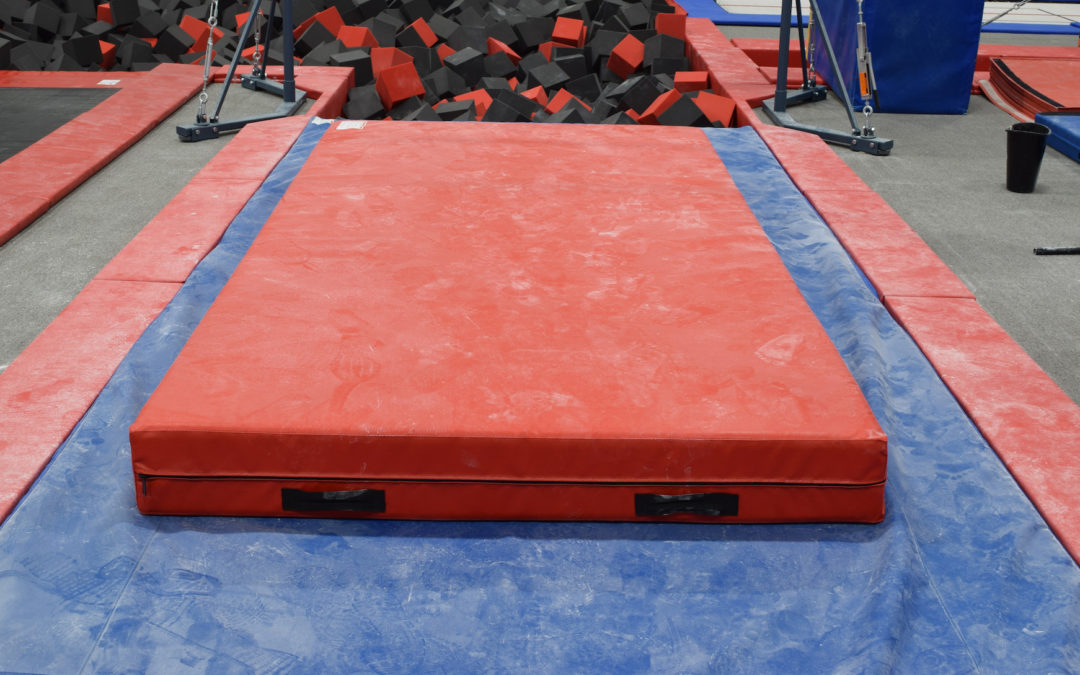One of the challenges for all mat manufacturers is determining the best combination of Density and ILD for the intended application of a mat.
There are two basic foams used in used in the construction of Gymnastic mats. Polyethylene foam which is a resilient Cross Linked closed cell foam, and Polyurethane which is softer shock attenuating open cell foam. In some cases a combination of both foams are used to distribute impact over a broader area.
Polyethylene: is a closed-cell resilient foam that offers a better return as a rebound or tumbling surface. It can be found in the construction of CBF (Carpet Bonded Foam), Folding Panel Mats, and as part of the foam configuration in a CLM (Competition Landing Mat). The Polyethylene used is generally a 2 lbs Cross Linked material, in 1.25” or 2” thickness, depending on the mats intended application.
Polyurethane: isan open-cell soft foam that will absorb energy over time and space when compressed. It is intended to abate as much energy as possible through deceleration before the foam reaches absolute compression, or G-max. This type of foam is used in various Densities, IFD’s, and thickness (usually 4” to 48”) depending on the mats intended application.
Density: Density is a measurement of the mass per unit volume. Measured and expressed in pounds per cubic foot or kilograms per cubic meter. Density affects foam durability and support. Typically, the higher the polymer density, the better the foam will retain its original properties and provide the support and comfort it was originally designed to produce.
IFD: Indentation Force Deflection (IFD) is a measurement of foams firmness. Although it is often thought that higher density foams are firmer, firmness is independent of foam density. It is possible to have high density foams that are soft, or low density foams that are firm, depending on the IFD specification. IFD is a measurement of the surface feel of the foam and relates to comfort.
IFD is measured by indenting (compressing) a foam sample 25 percent of its original height. The amount of force (in pounds) required to indent the foam to its 25 percent IFD measurement. The more force required, the firmer the foam. Flexible foam IFD measurements range from 10 pounds (super soft) to over 100 pounds (very firm).
When considering the type of mats necessary for your needs you first need to consider the application. The most obvious applications are Skill Development/Training, and of course Competition. As a safety protocol, to ensure that the competition surfaces are consistent from event to event the requirements for competition are generally mandated by a governing body.
On a side note, one should keep in mind that softer does not necessarily mean better. It’s not about what you land in, as much as it is how you land.
Inspecting your mats should be done frequently to determine their overall condition. Tears, holes, and loose covers can be a trip hazard. When possible open the cover of your mats and inspect the foam core for wear, tears, or holes. If a mat receives frequent impacts in a localized area and the foam is showing signs of deterioration, or worse has broken down to the point where the mat bottoms out, replace it. You may be able to relocate it for use where it will have a less significant role in regard to the safe environment of your gym.
Care for your mats is just as important as inspection. Similar mats can have varying life spans from gym to gym. This makes it difficult to predict the life span of any mat. The life expectancy of a mat is ultimately determined by the amount of stress it endures through use, and how it is cared for when not in use. Consider a set of tires. A race car driver can go through several sets of tires in a single race, while the average family car may make it 60,000-80,000 miles on one set. Hence, if a mat receives a significant number of localized impacts from high level skills, it’s going to breakdown faster than if the same mat was used for low impact developmental classes. As the number and severity of impacts increase, so does the rate of deterioration.
ARTICLE SUBMITTED BY:
The United States Gymnastics Suppliers Association (USGSA) is an organization of member companies who supply high quality products and services to the gymnastics industry. We are the world’s largest association of Gymnastics Suppliers and Manufacturers and are here to help guide, develop and lead the industry for a better future for gymnasts, clubs and companies servicing the Gymnastics community.


Recent Comments